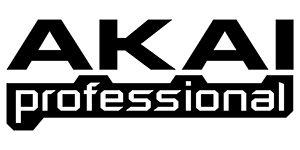
Akai was founded in 1929 in Tokyo. Masukichi Akai and his son, Saburo Akai, were the creators of the company. In 1984 the brand producing electronics formed a new branch for music instruments manufacturing called Akai Professional.
The main goal of Akai Pro is to produce best musical instruments which would conduce to musicians’ self-expression and give them new creation possibilities. The company’s technologies became the basis for contemporary music and MPC (Music Production Center) design for sequencing and sampling happened to be a new wave in musical instrument history.
MG1212 portable studio became the first product released by Akai – it used special tape cassettes MK20 to store recordings. The portable design and noise reduction technology gave the opportunity to record high quality sound which made Akai a serious competitor on the market where other analog devices were sold at a bigger price. Later MG1212 model was substituted with a more powerful and efficient MG1214 version.
The first analog synthesizer series went into production in 1984 and it was called AX: AX80 and a version which came out later and was called AX60 and AX73 (a 6-voice polyphony). AX80 model included 8 voices of polyphony, 61 keys, 2 VCOs, filters based on Curtis Electronics CEM 3372. The synthesizer features ADSR envelope generators, MIDI and the ability to record sounds onto cassettes. AX80 keyboard features aftertouch.
AX60 model was launched as kind of a response to the famous analog synthesizer Roland Juno but unlike Roland it incorporated one analog VCO and a filter based on Curtis Electronics CEM 3394 integrated circuit. The instrument, as much as AX80 model, comprises 64 memory patches to store sounds.
VX series included basic AX functions. It offers a rack version of AX73 – VX90 and an analog Minimoog model D-like synthesizer called VX600. The model features a 6-voice polyphony and one VCO, low pass and high pass filter. The memory of the instrument lets you save more than 100 patches.
Akai S series samplers were put into production in 1985. It comprised such models as S612, S700, S900. Sampler S612 became a flagship machine of the S line. The device was in 19-inch studio-rack format. An optional disk drive that featured the quick disk (QD) 2.8 inch format was needed if you wanted to save your samples. S900 took sampling at the next level – later its production was accompanied by a rackmount version and a synth called X7000. S900 allowed uploading new samples with the help of flash drives. S series models - S3000, S3000i released in 1992 and discontinued in 1995 – included a CD drive for sound recording.
MPC (Music Production Center) series truly brought fame and glory to Akai. The legendary Roger Linn took part in its creation being one of the project supervisors. Initially the series included mainly drum machines with MIDI sequencer, anyway a bit later the series was extended due to the functionality growth regarding integration with other devices. MPC series incorporated such models as: MPC60 (with OS 3.10 and SCSI interface), MPC3000, MPC2000 (replaced by MPC2000XL which didn’t require floppy disks), MPC4000 (featuring IntelliSample automated sampling function and built-in sync), MPC2500 (USB port and loop cut function), MPC1000 (an affordable version with smaller dimensions), MPC500 (most portable variant), MPC5000 (a 20-voice analog synthesizer with arpeggiator as well as new FX processor), MPC Renaissance (standalone workstation with OS), MPC Studio (Renaissance function; capable of using external device memory), MPC Element (with a display), MPC Fly (to work with Apple iPad and iPad2).
MPK series MIDI keyboards comprised MPC Note Repeat unique functions allowing you to get an accurate and quick playback as well as MPC Swing function for ideal sound timing. The models have a built-in arpeggiator and feature semi-weighted keys. There are mini versions of these instruments: MPK Mini MK2, MPK 225 with 25 semi-weighted keys.
In the early 2010s it became clear that analog synthesizers made a comeback and in 2015 Akai launched the line of analog synthesizers called Timbre Wolf (a 4-voice analog synthesizer with a 2-octave keyboard), Rhythm Wolf (a 5-voice rhythm machine and bass synth) and Tom Cat (a 5-voice percussion synthesizer). All of them are built on the same platform, equipped with a step sequencer and are a great option if you’re looking for sounds of high quality and need it to be affordable.
Akai Pro takes the leading position among drum machine manufacturers. It’s one of the most influential companies into synthesizer and sampler making business.








